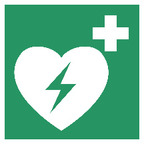
- Research Projects
- Synopsis of completed research projects
- Wearable cardioverter-defibrillator (WCD) therapy as prevention of sudden cardiac death in patients at risk
Wearable cardioverter-defibrillator (WCD) therapy as prevention of sudden cardiac death in patients at risk

Project leaders: Claudia Wild
Project team: Sabine Ettinger
& Mirjana Huic
Duration: May 2016 – November 2016
Suggested by: Representatives of federal states in Austria
Publication: Decision Support Document No. 103: https://eprints.aihta.at/1109/
Language: English (Executive summary in German)
Background:
Sudden cardiac death is the most common cause of death in patients with coronary artery disease. In most cases, ventricular tachyarrhythmias (ventricular tachycardia/VT and ventricular fibrillation/VF) are the underlying etiology of sudden cardiac death. These arrhythmias can be treated by rapid counter-shock performed by implantable or external/wearable defibrillators or by a counter-beat by a pacemaker. Other causes of sudden cardiac death are bradycardia or torsades de pointes. According to guidelines (e.g. from the American Heart Association), there is a recommended waiting time in some situations before an implantable cardioverter-defibrillator (ICD) is indicated. A recovery of structural abnormality and an improvement of ventricular dysfunction could occur so that an ICD therapy may not be indicated anymore. Furthermore, a patient could have some contraindications (e.g. an infection) and therefore should not receive an ICD for some time, or an ICD needs to be (temporary) explanted due to specific reasons. Thus a wearable cardioverter defibrillator (WCD) could be used as a bridge to an ICD or to a heart transplant (in order to cover the waiting period). In Germany costs of the WCD are partly covered by health insurance.
This HTA-report will be performed as a „collaborative assessment“ within the EU-project EUnetHTA („European Network for Health Technology Assessment“) Joint Action (JA) 3. The Agency for Quality and Accreditation in Health Care and Social Welfare in Croatia (AAZ) will be co-author of this HTA-report. The Institute for Quality and Efficiency in Health Care (IQWiG) in Germany as well as the Galician Agency for HTA in Spain (Avalia-t) will be responsible for internal review of the HTA-report („dedicated reviewers“).
Aims of project:
The aim of the project is to perform a synthesis of evidence on the basis of a systematic literature review regarding effectiveness and safety of the WCD for specific indications. Moreover (changes of) (health related) quality of life (QoL) of patients as well as ethical and organisational aspects of the use of WCD should be evaluated (e.g. regarding provision).
Research objectives:
- Is the use of a WCD for treatment of patients at risk of sudden cardiac death more effective and safe than no intervention/placebo intervention/standard therapy with regard to defined outcomes (see PICO)?
- Which (health related) influences (if any) does the WCD have on QoL of patients?
- What is the satisfaction and compliance rate of patients with the WCD?
Methods:
- Systematic review of published clinical studies/documents regarding WCD (LifeVest) in comparison to controls determined in the PICO question
-
Systematic literature search in:
- Cochrane (CENTRAL), Centre for Research and Dissemination (CRD), Embase, Medline
- Handsearch (in references, as appropriate via Scopus), internet-search, contacting manufacturers
- Data extraction: Two review authors include and exclude studies, independently from each other. One author extracts the data and the other second controls the extracted data.
- Assessing the risk of bias and the strength of evidence: Grading of Recommendations, Assessment, Development and Evaluation (GRADE) approach is used.
- Use of qualitative research methods like e.g. in-depth interviews with 3 to 4 patients and focus groups (which will be identified via cardio-support groups or other channels) in order to include them in scoping (so that all relevant questions and topics will be included in the HTA-report).
- Use of the EUnetHTA „HTA Core Model“ as well as EUnetHTA guidelines
PICO-question:
|
Population |
Patients (adults who have a maximum chest circumference of 144 cm) – with the following indications:
Indication 1:
Indication 2:
Indication 3:
Indication 4:
|
|
Intervention |
WCD (LifeVest®, WCD 3100, WCD 4000 and earlier models), from ZOLL Medical Corporation, Pittsburgh, PA, USA, is the only known manufacturer) |
|
Control |
|
|
Outcomes |
|
|
Effectiveness |
Primary endpoint:
Secondary endpoints:
|
|
Safety |
Adverse device events (any, serious) AEs:
SAEs:
|
|
Study design |
Effectiveness: systematic reviews, meta-analysis, HTA-reports, prospective randomized controlled trials, prospective non-randomised controlled trials Safety: prospective randomized controlled trials, prospective non-randomised controlled trials, prospective studies without a control group e.g. observational studies, case series, register (manufacturer database) |
Time schedule/ milestones (in months):
|
Time frame |
Task |
|
May 2016 |
Scoping, precision of PICO-question, identification of manufacturers, identification of relevant patient(-support groups) |
|
June 2016 |
Preparation of EUnetHTA project plan (discussion with “dedicated reviewers”) |
|
June - August 2016 |
Systematic literature search, non-systematic hand search, literature selection |
|
August - October 2016 |
Data extraction, synthesis and assessment of evidence, drafting of 1st version of HTA-report |
|
September 2016 |
Internal review of “dedicated reviewers” and drafting of 2nd version of HTA-report |
|
October 2016 |
Review of external reviewers (clinical experts) and drafting of 3rd version of HTA-report |
|
November 2016 |
Medical editing, formatting, preparation of final version of HTA-report, publication |















